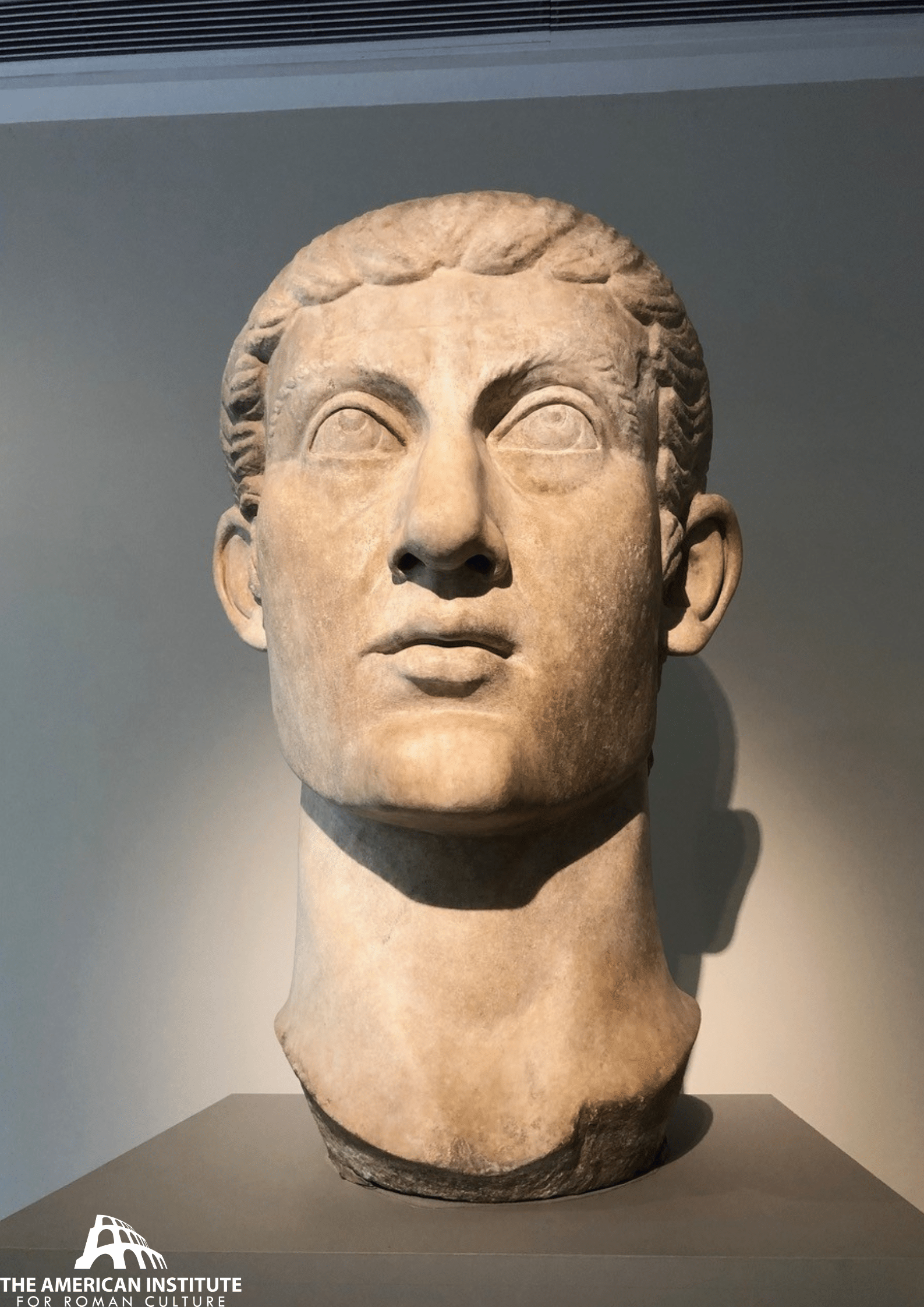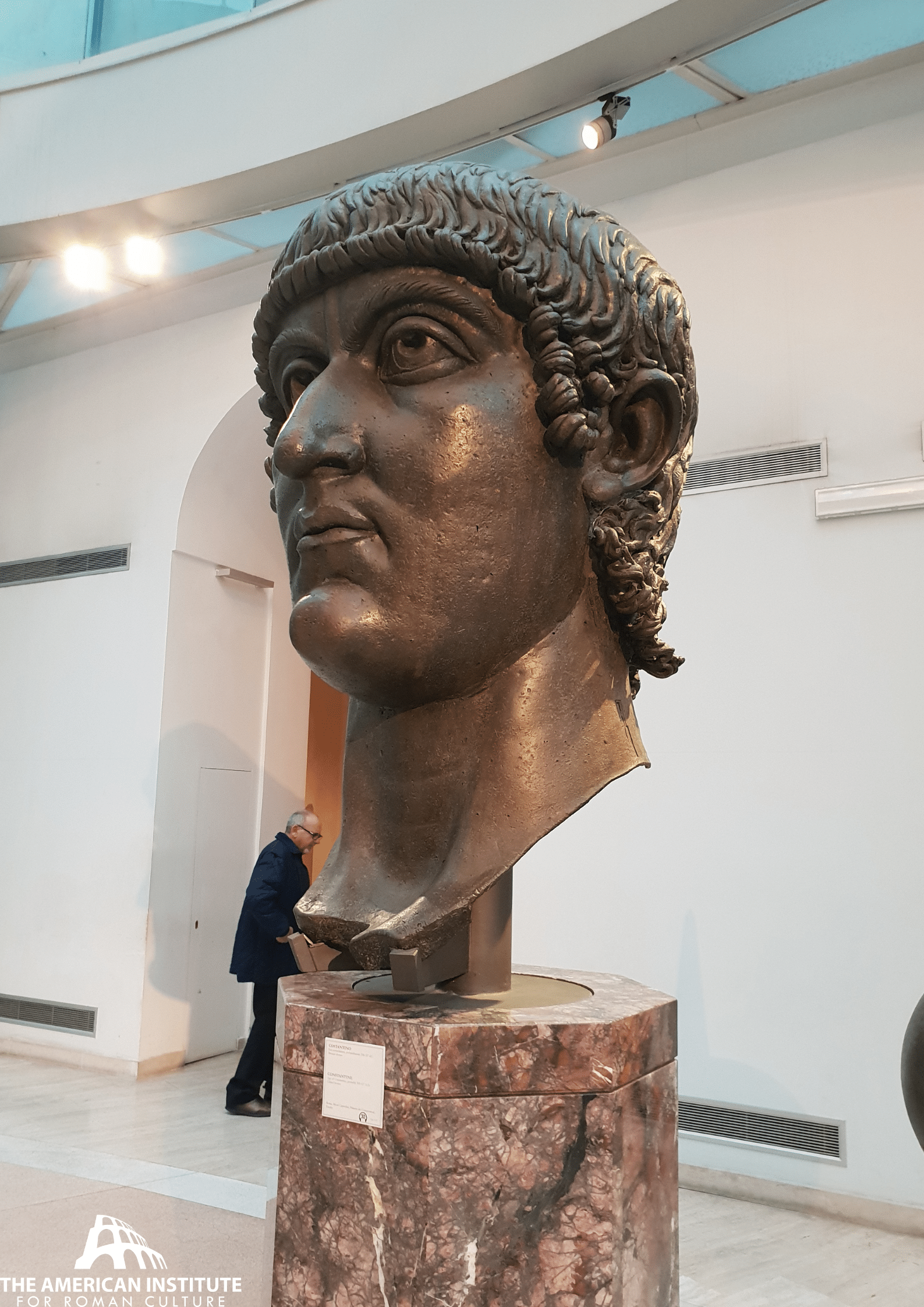Official Name: IMPERATOR CAESAR FLAVIUS VALERIUS CONSTANTINUS AUGUSTUS
Birthdate: February 27, 272 or 273 CE.
(CIL 12, pp. 255, 258, 259) (Eusebius, Life of Constantine, 1.8) (Eutropius, Short History of the Roman Empire, 10.8.2)
Birthplace: Constantine was born in the city of Naissus in the province of Moesia Superior (modern-day Niš, Serbia).
(Firmicus Maternus, Mathesis, 1.10.13) (The Anonymus Valesianus, The Lineage of the Emperor Constantine, 2)
Parents: Constantine was the son of Constantius Chlorus and his consort Helena. Constantius Chlorus served as emperor, first as caesar and then as augustus, for over ten years as part of the tetrarchy. Helena converted to Christianity later in life and spent time in the holy land searching for relics. For these acts, she was canonized as a saint by the Catholic Church.
(The Anonymus Valesianus, The Lineage of the Emperor Constantine, 1-2) (Eutropius, Short History of the Roman Empire, 9.22 & 10.1) (Socrates Scholasticus, Ecclesiastical History, 1.17)
Reign: Constantius Chlorus died on July 25, 306 CE in Eboracum (modern-day York, England). Later that day, troops loyal to his father declared Constantine emperor.
(The Anonymus Valesianus, The Lineage of the Emperor Constantine, 2) (Socrates Scholasticus, Ecclesiastical History, 1.2)
Marriages: Before he was emperor, Constantine was involved with a woman named Minervina. The nature of their relationship is not clear, some sources call her his wife while others refer to her as a concubine. Once emperor, Constantine married Fausta, the daughter of his imperial colleague Maximian.
Minervina (290? – 307 CE)
Fausta (307 – 326 CE)
(Aurelius Victor, Epitome de Caesaribus, 41) (Panegyrici Latini, 7)
Children:
Crispus (son by Minervina)
Constantine II (son by Fausta)
Constantius II (son by Fausta)
Constans I (son by Fausta)
Constantina (daughter by Fausta)
Helena (daughter by Fausta)
(The Anonymus Valesianus, The Lineage of the Emperor Constantine, 6.35) (Eutropius, Short History of the Roman Empire, 10.9-10) (Aurelius Victor, Epitome de Caesaribus, 41)
Death: Constantine died of natural causes on May 22, 337 CE in Nicomedia (modern-day İzmit, Turkey).
(Eusebius, Life of Constantine, 4.64) (Eutropius, Short History of the Roman Empire, 10.8)

Head of Constantine, Capitoline Museums, Rome, Jan 2020

Head of Constantine, Metropolitan Museum of Art, New York, June 2023

Bronze Head of Constantine, Musei Capitolini, Rome, Jan 2020
312
(Lactantius, On the Deaths of the Persecutors, 44) (Eusebius, Life of Constantine, 1.28-29)
313
(Lactantius, On the Deaths of the Persecutors, 48) (Eusebius, Ecclesiastical History, 10.5)
324
(Eutropius, Short History of the Roman Empire, 10.5-6) (Zosimus, New History 2.28)
326
(Zosimus, New History 2.29) (Aurelius Victor, Epitome de Caesaribus, 41)
330
(Zosimus, New History 2.30-31) (The Anonymus Valesianus, The Lineage of the Emperor Constantine, 6.30)
337
(The Anonymus Valesianus, The Lineage of the Emperor Constantine, 6.33) (Jerome, Chronicle, 2353)
This content is brought to you by The American Institute for Roman Culture, a 501(C)3 US Non-Profit Organization.
Please support our mission to aid learning and understanding of ancient Rome through free-to-access content by donating today.
Cite This Page
Cite this page as: Darius Arya, The American Institute for Roman Culture, “Constantine,” Ancient Rome Live. Last modified 06/14/2024. https://ancientromelive.org/constantine/
License
Created by The American Institute of Roman Culture, published on 06/14/2024 under the following license: Creative Commons: Attribution-NonCommercial-ShareAlike. This license lets others remix, tweak, and build upon this content non-commercially, as long as they credit the author and license their new creations under the identical terms. Please note that content linked from this page may have different licensing terms.


